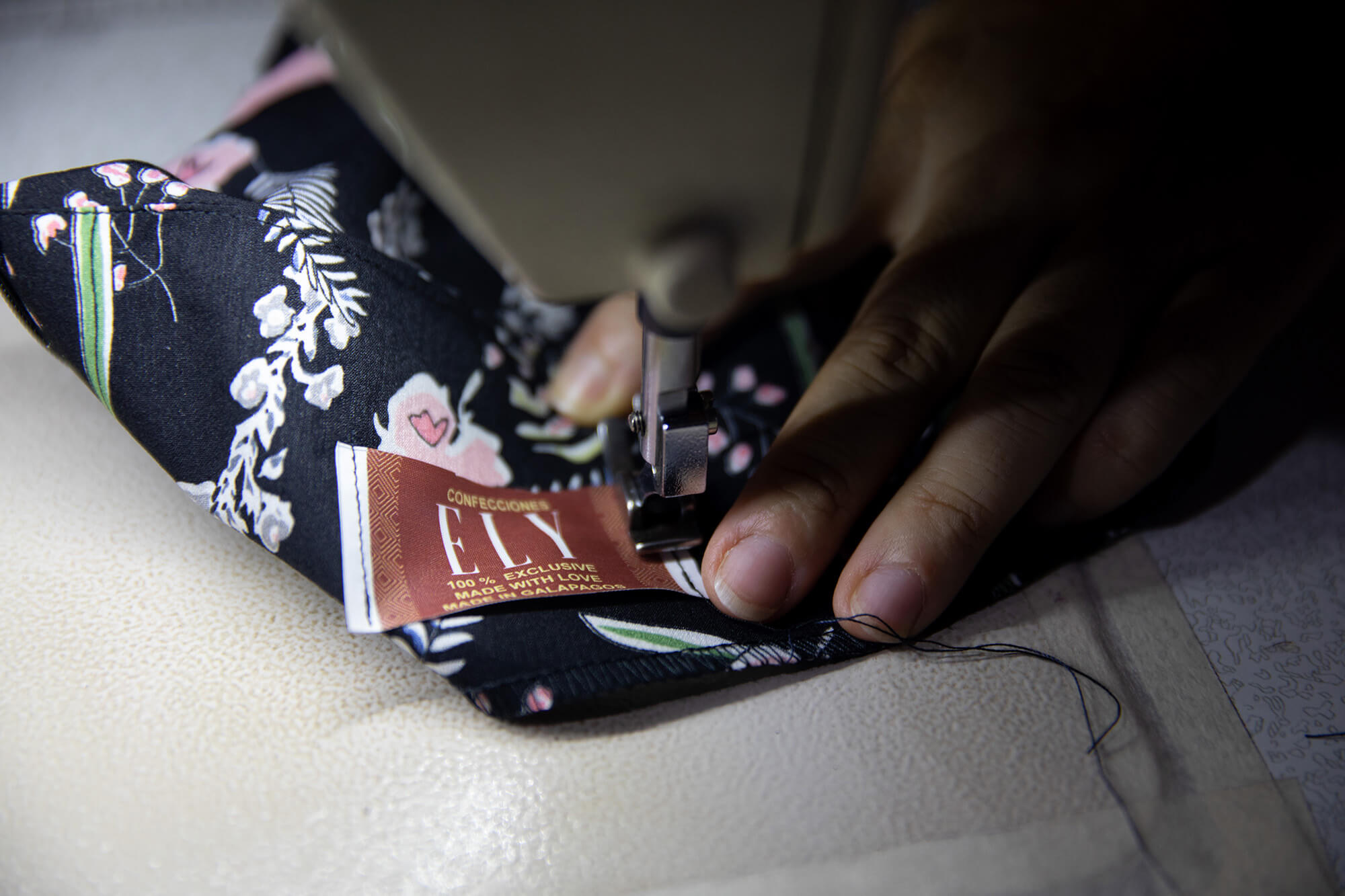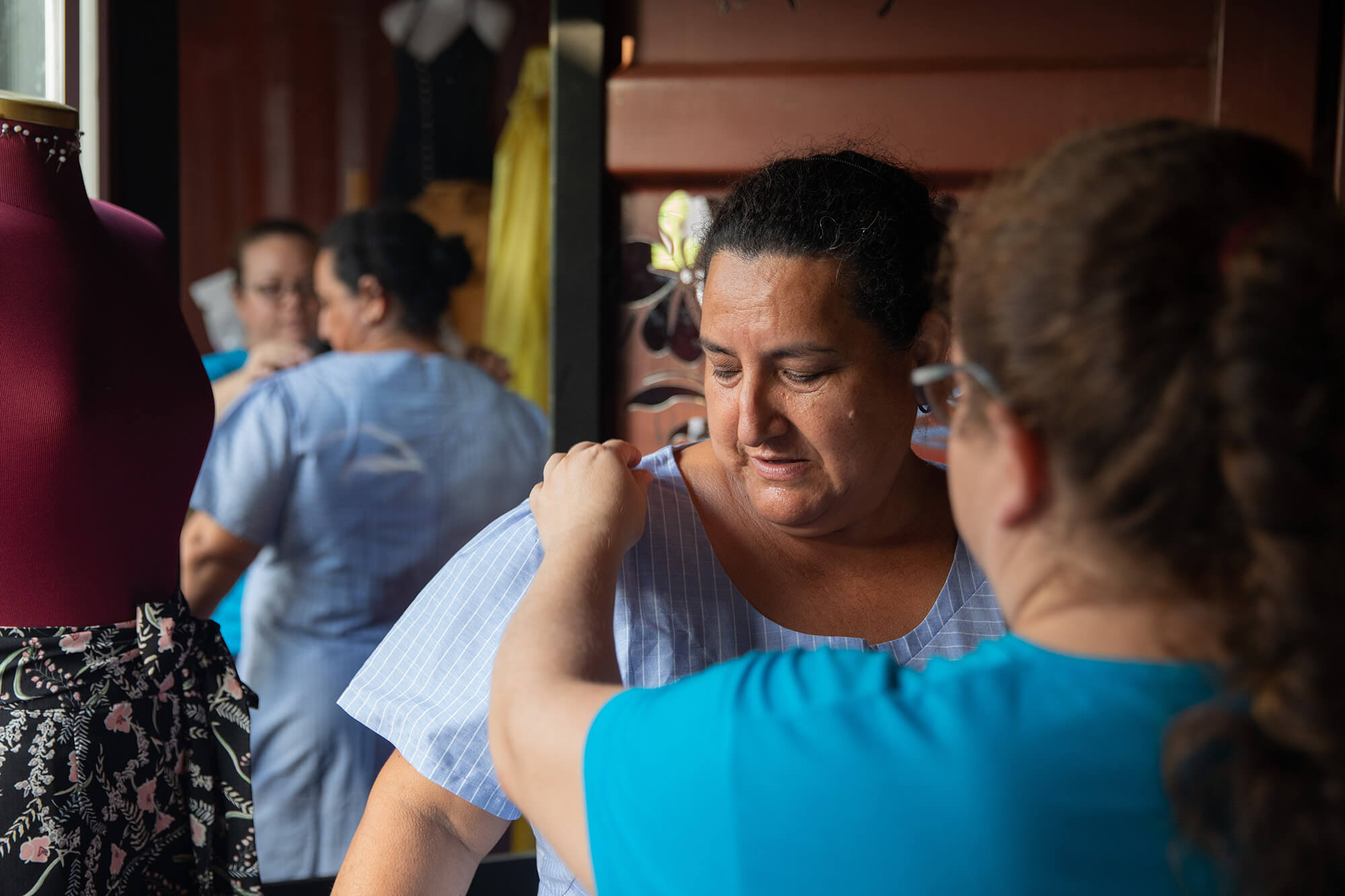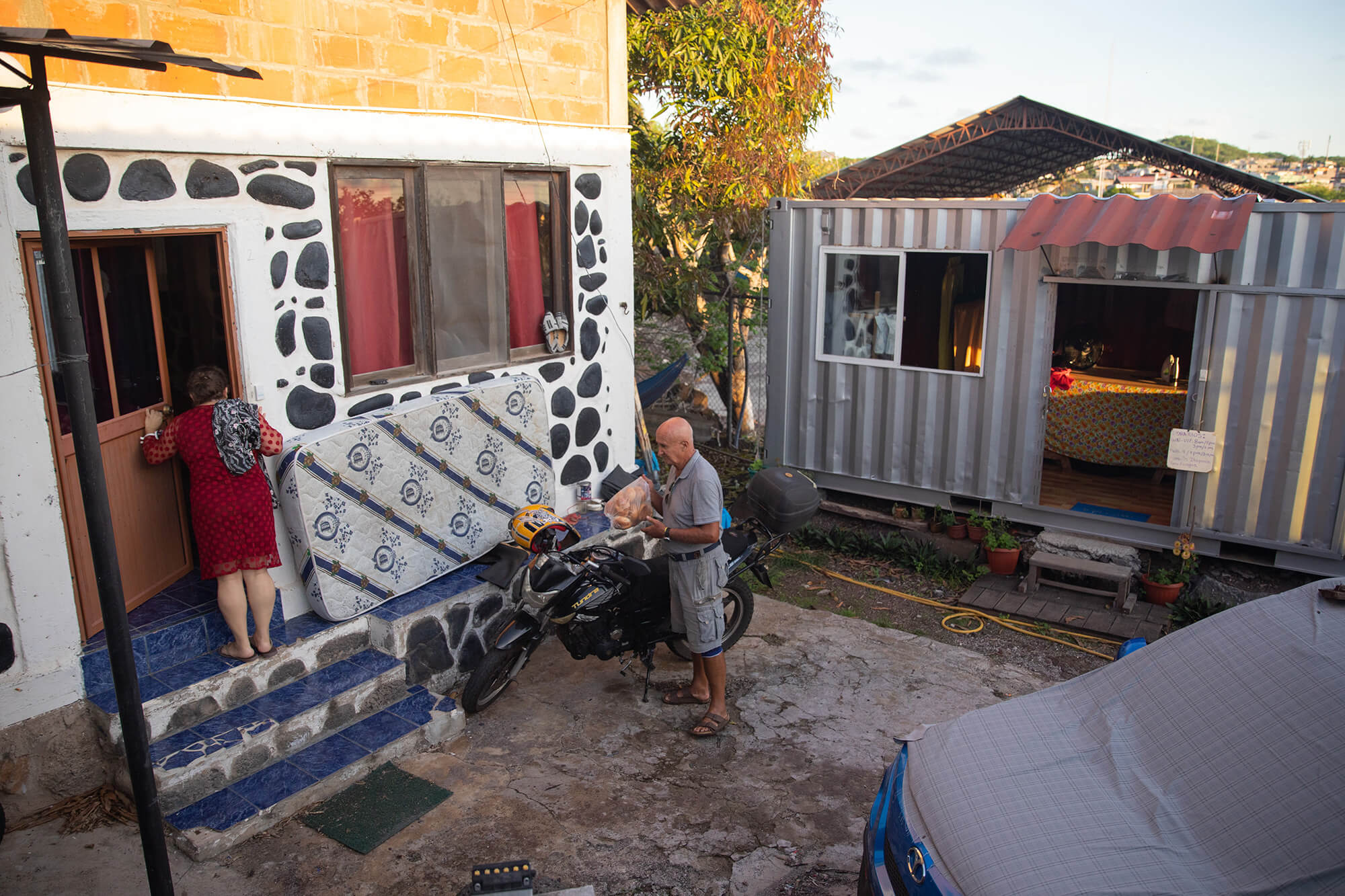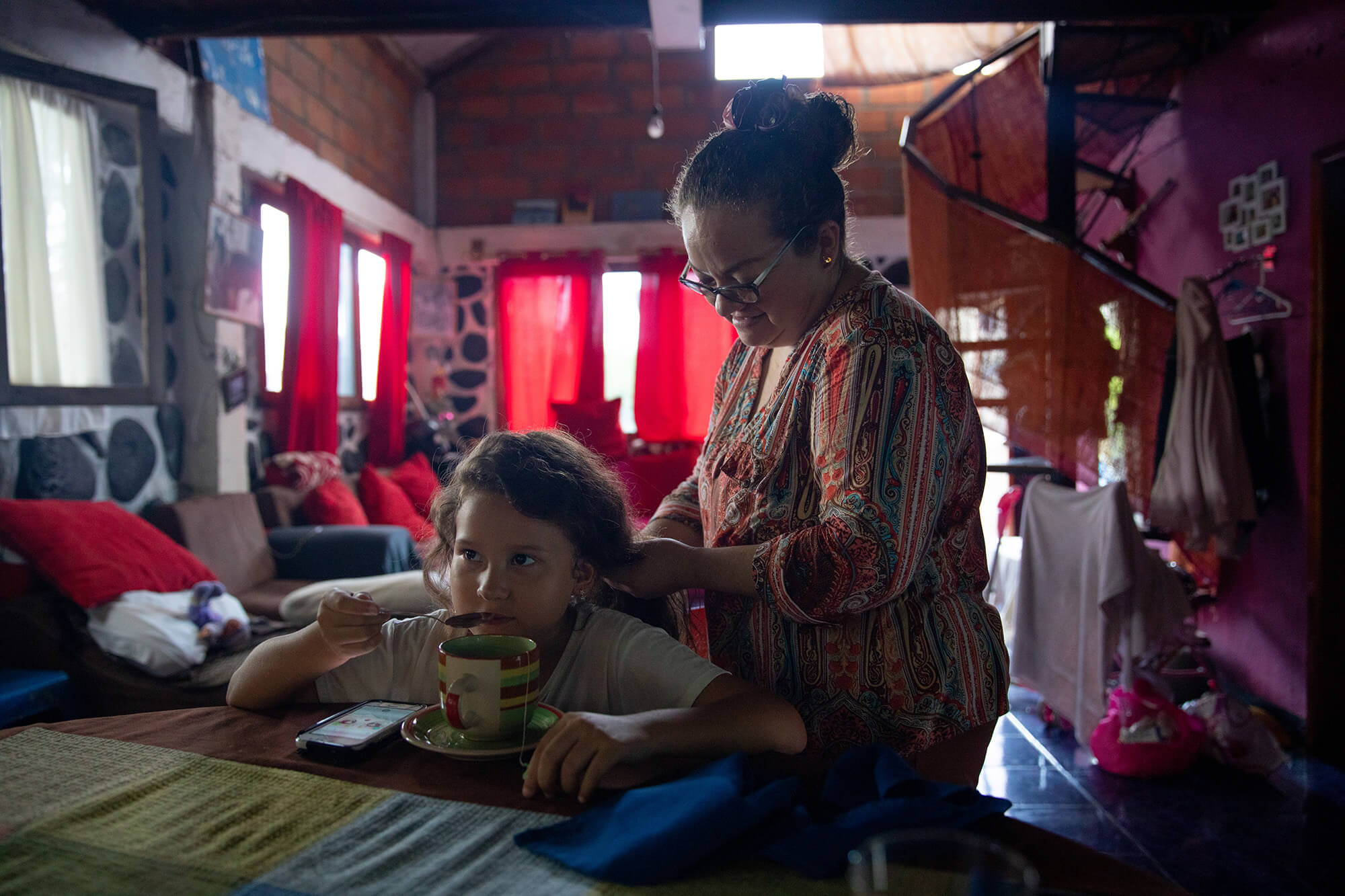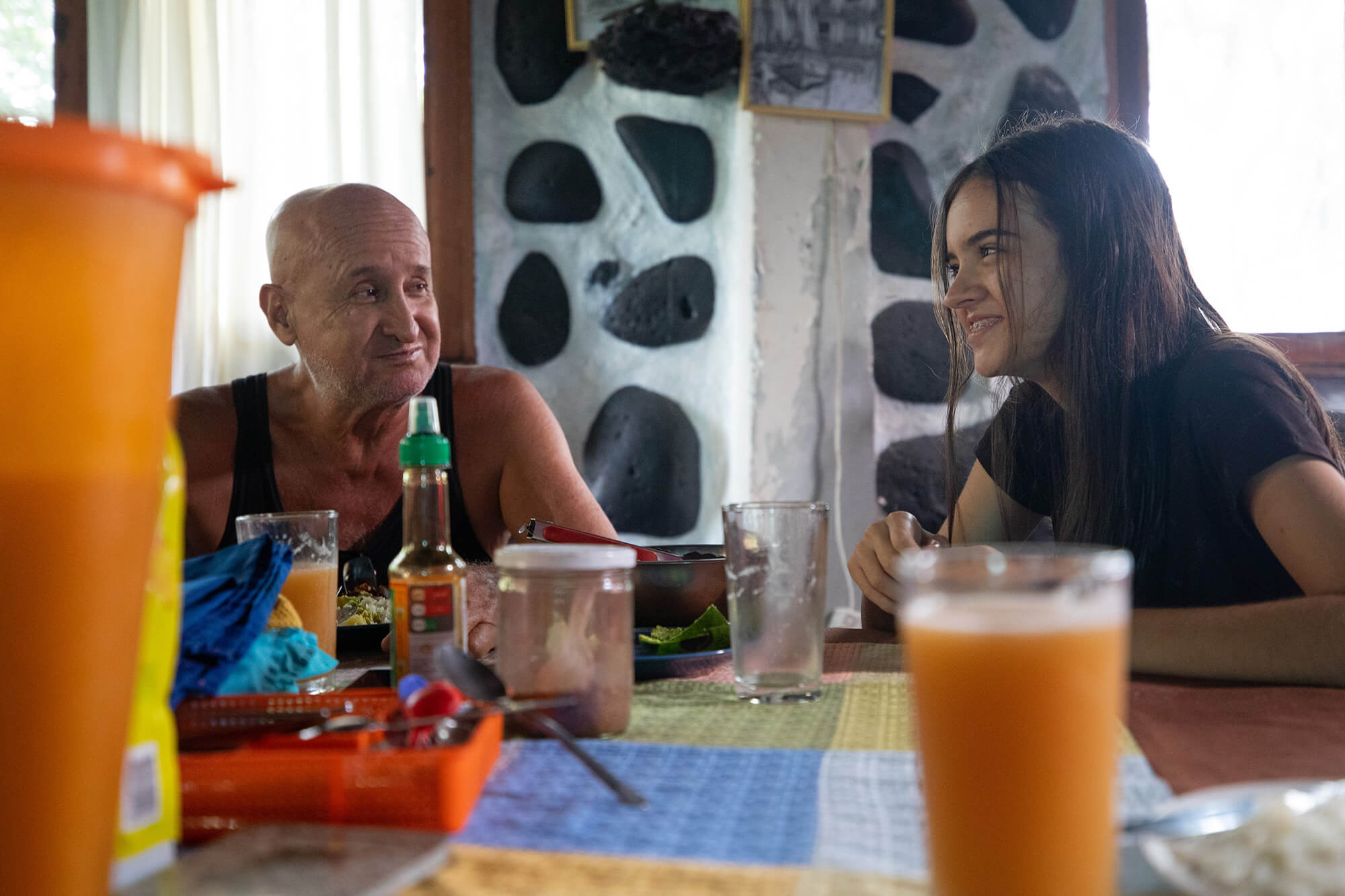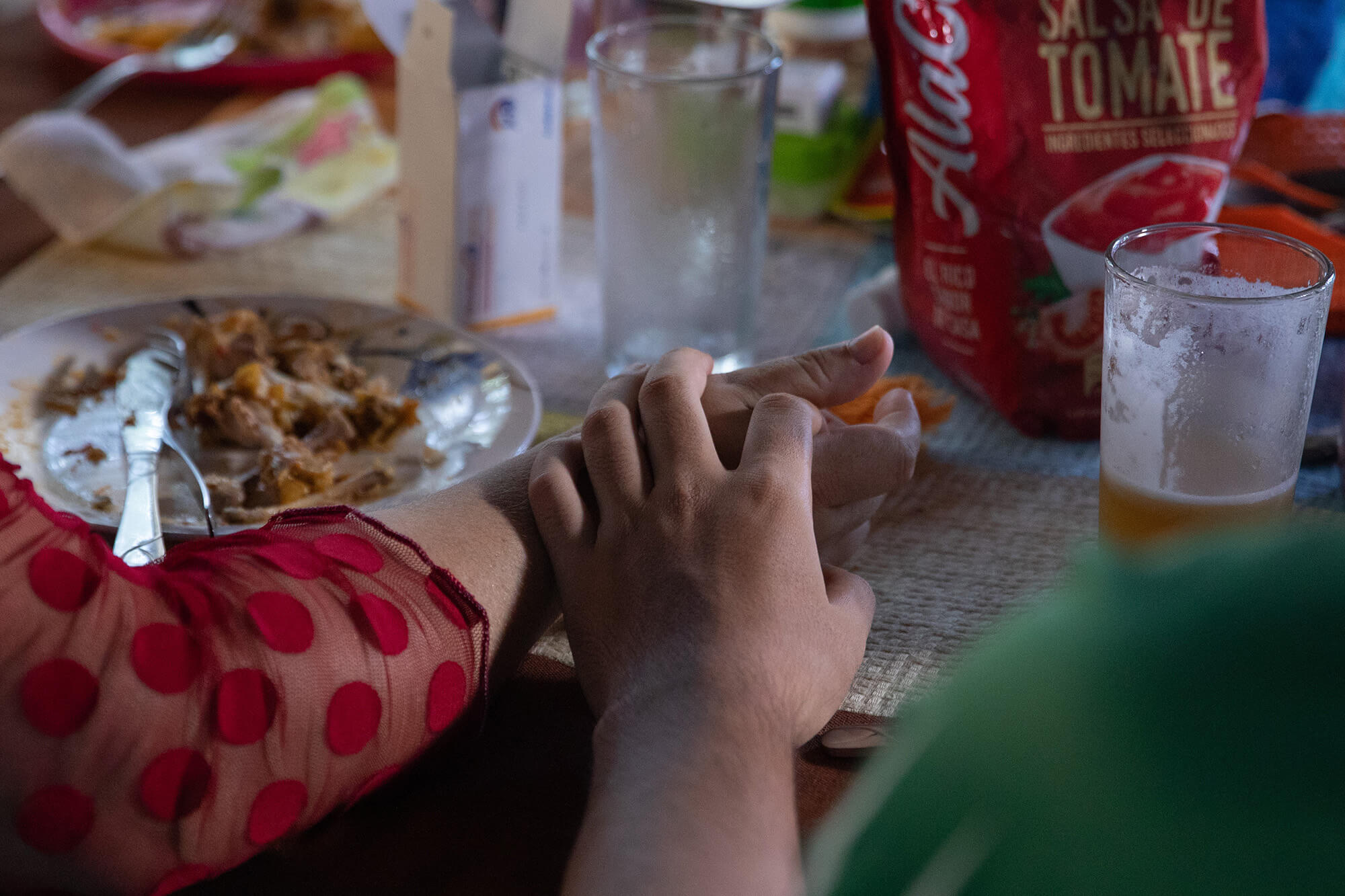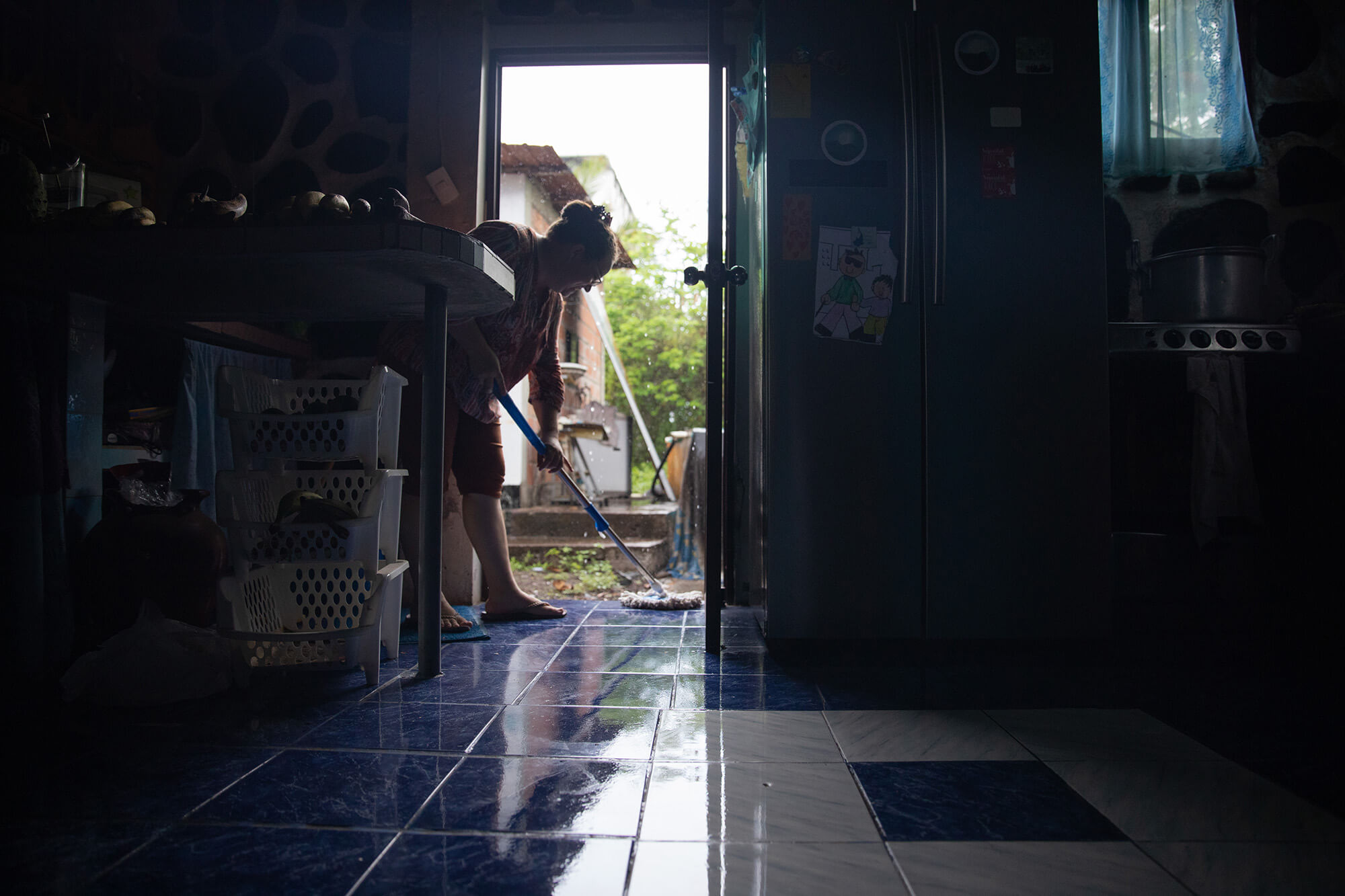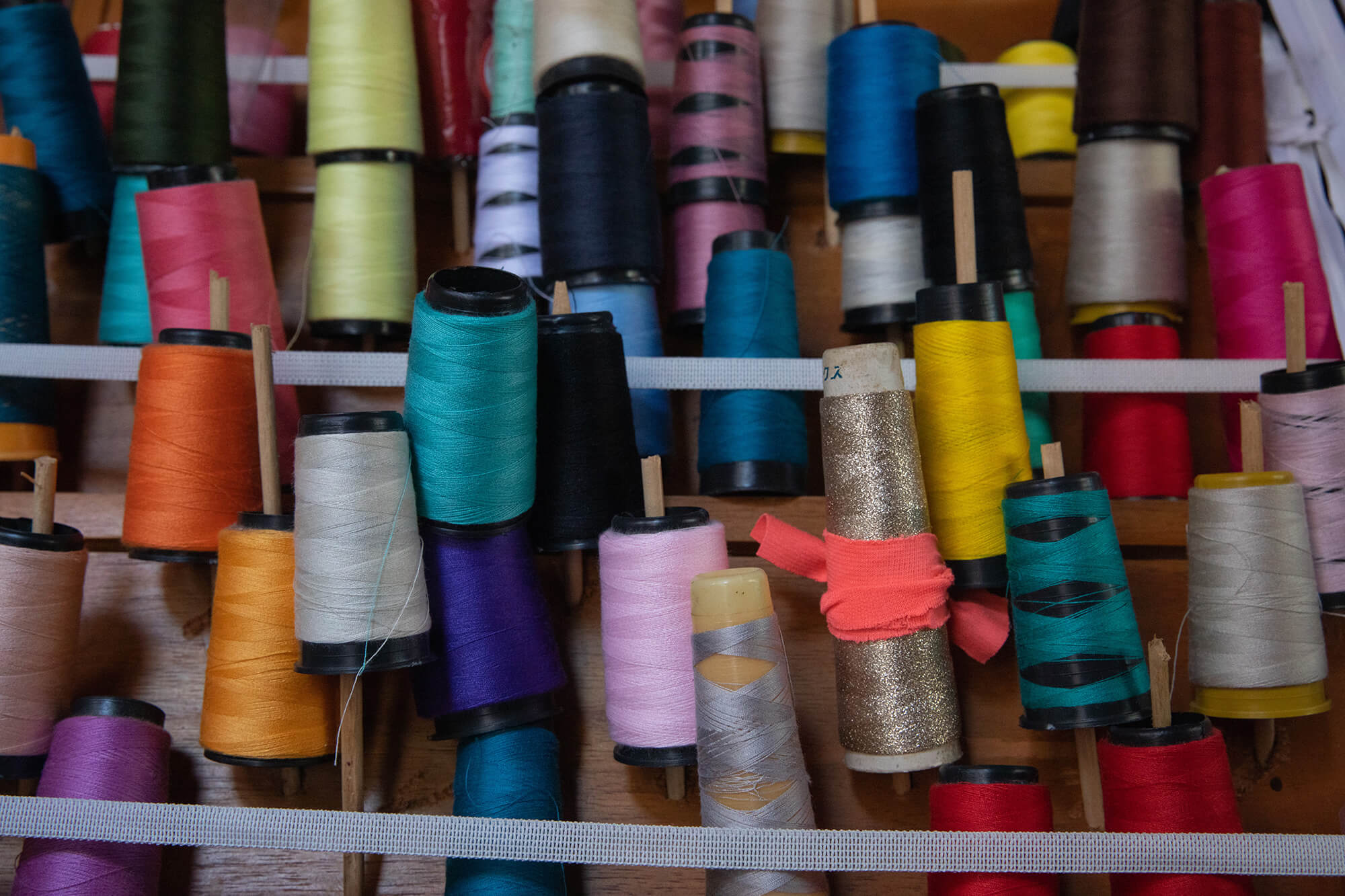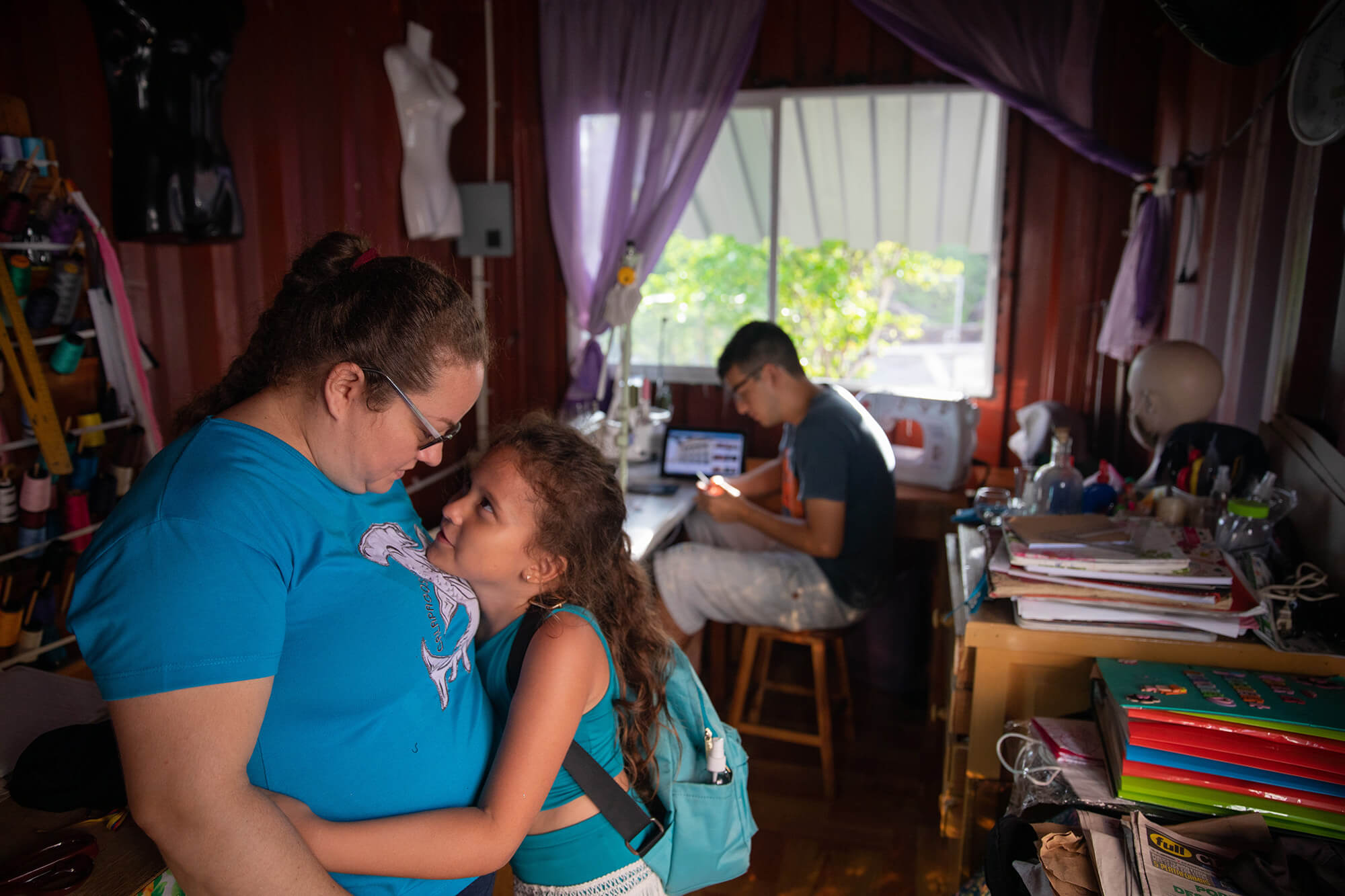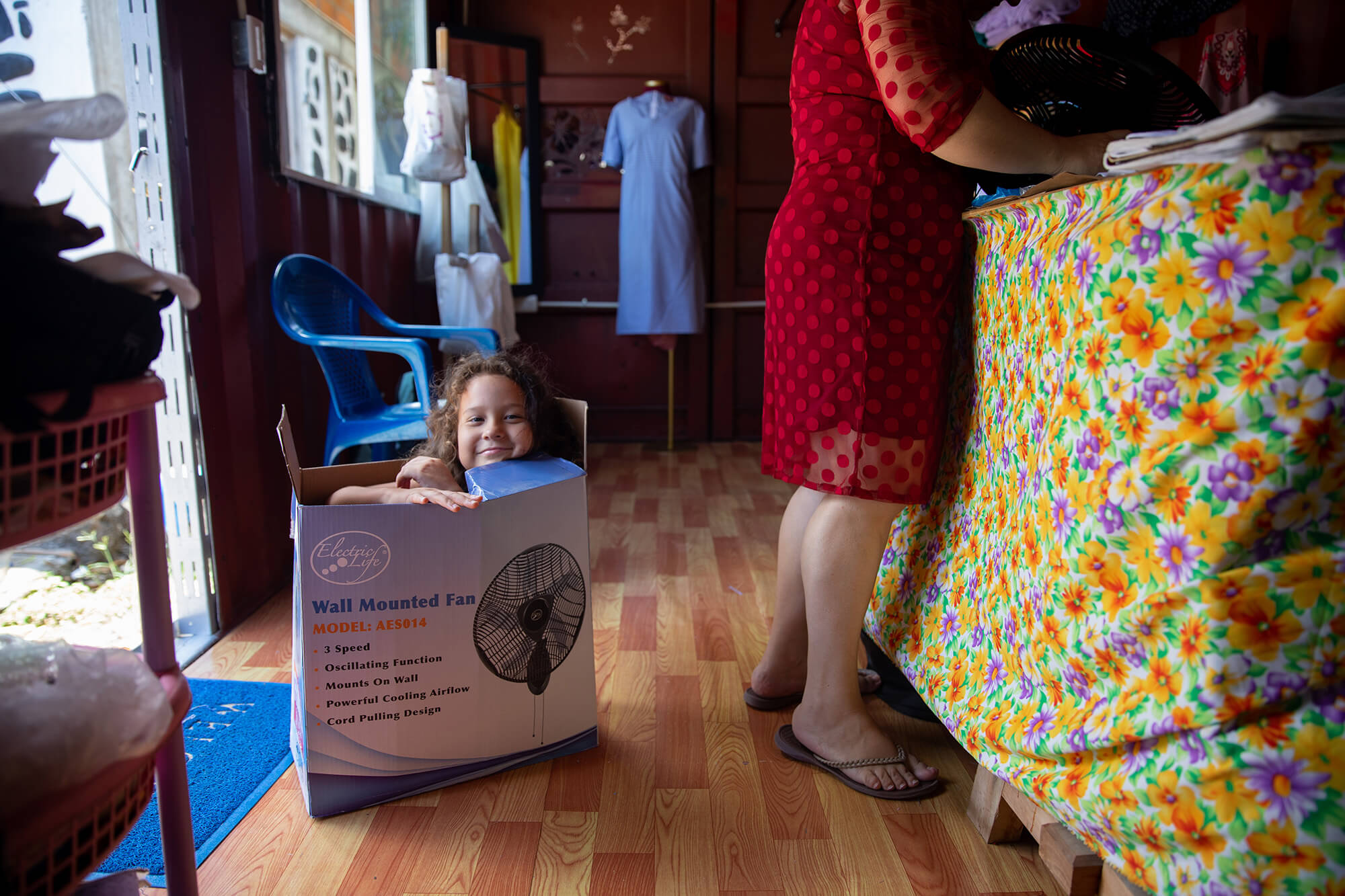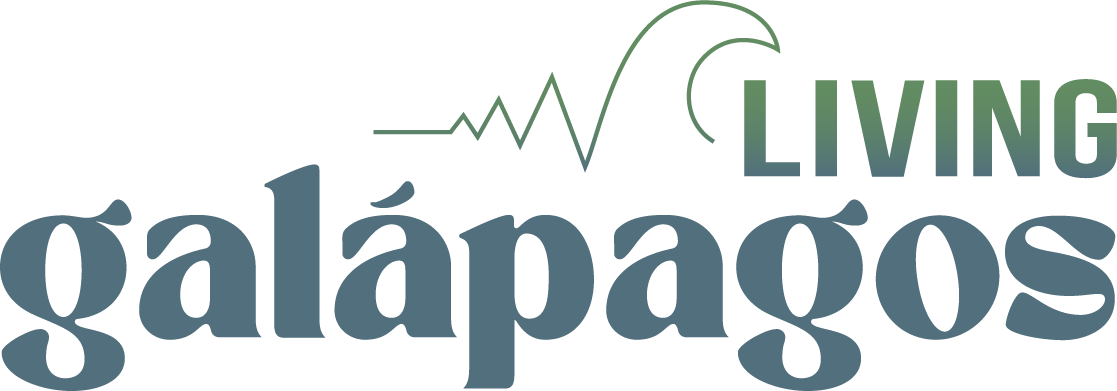A Mother’s Love and A Seamstress’ Needle
By Abigail Pittman
Maria Elizabeth Alava-Mendoza, or “Ely,” is 36 and a seamstress and clothing designer living in the Galápagos Islands, Ecuador. Alava has lived on San Cristóbal Island since she was 9 years old. She remembers when the roads were sand instead of asphalt and there were no cars.
Alava’s three children guide her work and day-to-day life. She once studied to be a teacher, but found that the profession caused her to be away from them too often. “My children are a treasure,” said Alava.
“It’s for them that I live,” she added.
When Alava began making clothes for women and girls, she worked out of her living room. That space grew too small to accommodate both family life and Alava’s sewing work, and she moved to a side apartment. In December 2021, Alava purchased and had a shipping container outfitted to be her new workshop. She works there almost every day, making clothing to support her family—her husband, German Puente, 69, is retired and works on part time projects. The space connects Alava’s work and her family together tangibly—the door to her family’s home is only steps from the sliding door to her workshop.
Having her workplace be so close to home isn’t a concern for Alava. “It’s much easier because I don’t have to pay for transportation or grab a taxi or leave my home or leave my children,” she said. “It’s better if I want to go to clean or go to cook or see something.”
“Everyone knows me here,” she added. “They know where I live, and they know where I work.”
Here, Alava stands at the door to her home as her husband Germán looks on.
Working so close to home allows Alava the freedom to move between the spaces, especially if it’s hot outside—the metal container amplifies the Galápagos heat. She uses the time out of her shop to clean or spend time with her children, while Germán cooks lunch and runs errands for Alava during the day.

